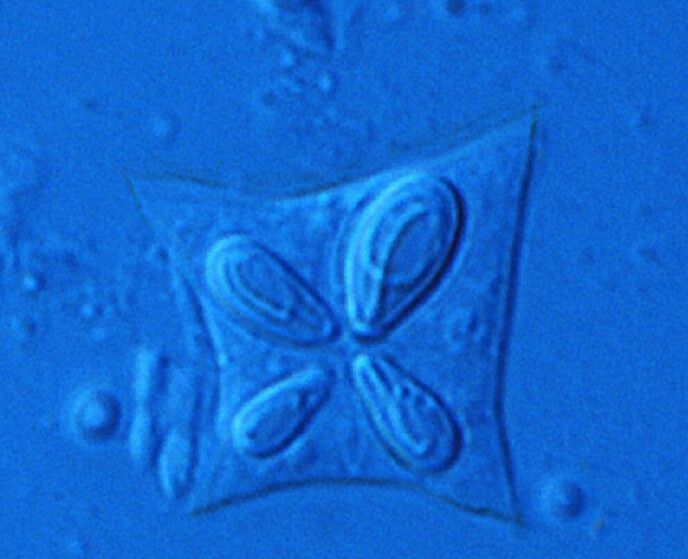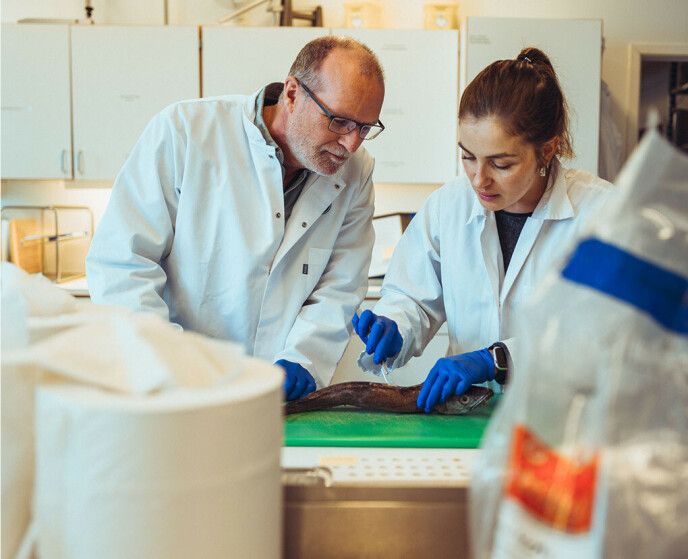– The danger is that people buy a fish that looks nice in the shop. Then they take it home and leave it in the fridge, and there the process will continue. When you take it out to eat it, it may be soft.
That’s what researcher and parasitologist Arne Levsen at the Institute of Marine Research tells Dagbladet.
Last year, a colleague of his discovered the parasite for the first time kudos thrysites in Norwegian coastal cod and tusk, during a coastal cod trip on the Helgeland coast. Fiskeribladet reported this earlier this week.
– You cannot see the parasite with the naked eye. You will only see it when it is too late, says Levsen to Dagbladet.
The good news is that there is no indication that the parasite can be harmful to humans who would be harmed by eating infected fish meat.
– But it is unappetizing, says the marine scientist.
JELLY FISH #1: Kudoa infected fish. Paolo Cipriani / Institute of Marine Research
view more
– Very unusual
Kudoa thrysites is a “microscopic parasitic nettle”, explains Levsen.
– They are closely related to jellyfish, corals and sea anemones, and have specialized in a parasitic life, he says.
What makes the kudoa special is that scientists do not know the parasite’s life cycle.
– Kudoa has already proved to be of economic importance – both for the wild fish fisheries and for aquaculture. It is very unusual that one has so little knowledge about such a widespread parasite, says Levsen.
JELLY FISH #2: Kudoa infected fish. Paolo Cipriani / Institute of Marine Research
view more
The parasite stays hidden in the muscle fibers as long as the fish is alive, explains the marine scientist.
– When the fish dies, and the decomposition process begins, enzymes are released from the parasite’s spores, and they begin to dissolve the fish flesh. Depending on the amount of parasites, the size of the fish and the storage temperature, you will be able to get a completely dissolved fillet within 12 to 48 hours.

SQUARE: Kudoa spore magnified a thousand times through a microscope. Photo: Lucilla Giulietti / Institute of Marine Research
view more
– Spreading underway
When the process has progressed far enough, the meat can be scraped straight off with a spoon, according to Levsen.
– The condition itself is called “jelly fish”. It is directly translated from English “jellyfish”. The consistency is like jelly, quite simply. The muscle structure completely dissolves.
The parasite has previously been found in Norwegian mackerel. However, the findings in tusk and coastal cod are the first of their kind.
– Currently, the hypothesis is that a spread is underway. It may be linked to more favorable conditions for the parasite, due to increased temperature in the coastal areas. Cod has been on the menu for Norwegians for many hundreds of years, so if this had been common in the past, we would have known about it, states the marine scientist.

FISH RESEARCH: Arne Levsen and research colleague Lucilla Giulietti analyze white fish for the kudoa parasite. Photo: Paolo Cipriani / Institute of Marine Research
view more
Old acquaintance
One hypothesis is that the supposed spread is due to temperature changes that can be linked to climate change, Levsen explains – but emphasizes that the researchers do not currently have good enough data to draw any solid conclusions.
The Institute of Marine Research has previously had a dialogue with Norway’s Herring Sales Association about the discovery of kudoa in mackerel, says Levsen.
– The farming industry knows about this parasite, because it has been a problem in Atlantic salmon farming on the Pacific coast in Canada.
Going forward, the researchers will increase their monitoring efforts, with the aim of mapping whether other important fish species may be affected by the parasite.
– We must form a picture of the situation along the coast.









